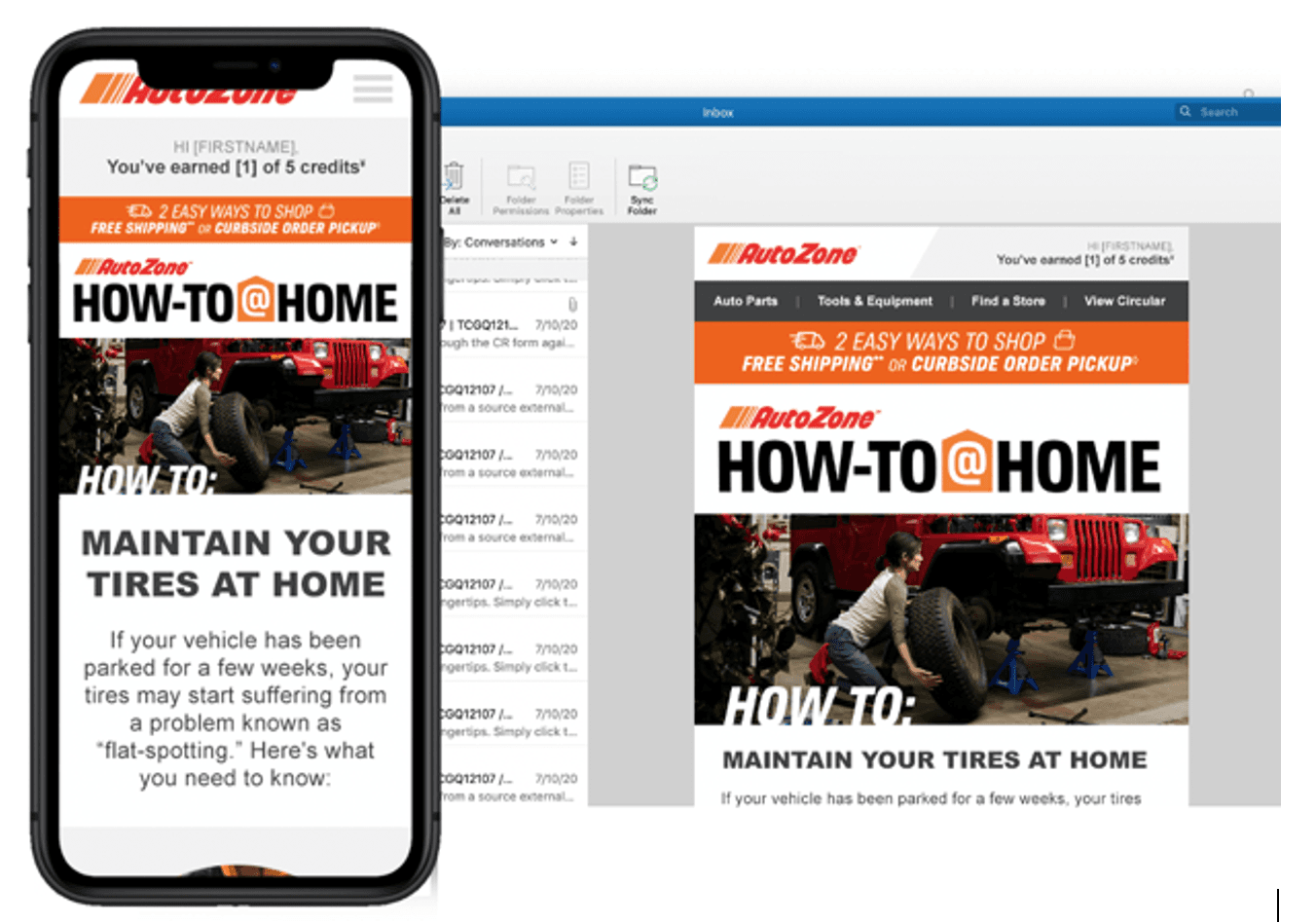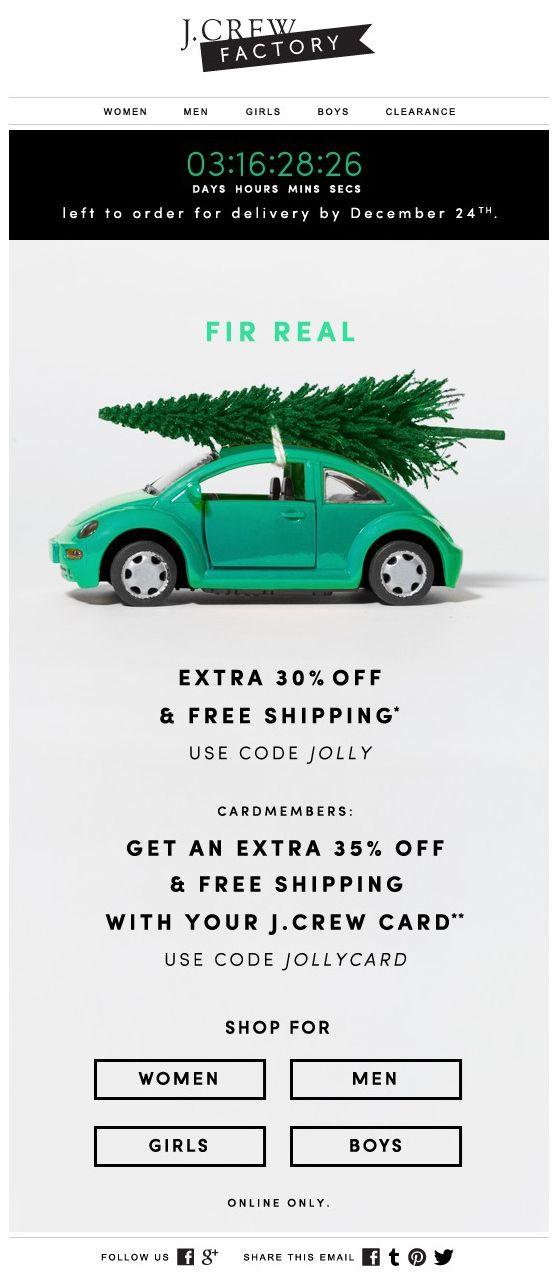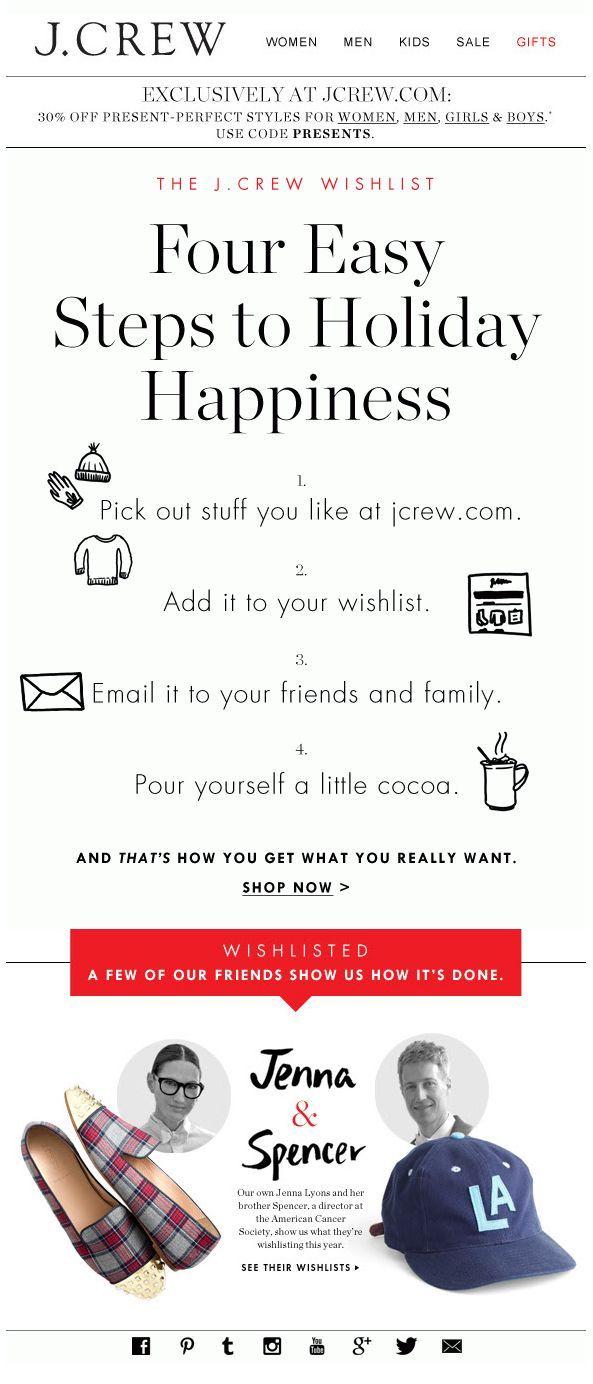

If you have any questions about our services, need some help, or just want to chat, we're here for you. Simply fill out the form below, and one of our team members will reach out to you soon.
If you have questions regarding U.S. consumer data privacy, click here.
Contact Epsilon
P.O. Box 1478
Broomfield, CO 80038
Attn: Privacy
(866) 267-3861
privacy@epsilon.com

With Epsilon client YTD email volume up 9% over 2019 and Forrester predicting a 40% lift in digital marketing messages in 2021, you may ask yourself: “How can I increase sales and grab more revenue share from my competitors this holiday season when inboxes are already flooding with messages?” It’s more critical than ever that you cut through the clutter this shopping season, using email creative to stand out in the inbox and wow your customers.
But this can feel daunting when there’s so much uncertainty, not to mention limited social gatherings, interrupted travel plans, shipping delays and consumer hesitancy about shopping in-store. You may also be challenged by limited resources, wondering how you can possibly do more with less in such a competitive market.
I’m pleased to share that there are many fast, actionable ways you can pivot in time for the holidays and ultimately win with customers. All it takes is a bit of imagination and a sound creative strategy.
But before we discuss creative, let’s quickly talk about some trends that will help even the odds with your competition.
According to eMarketer, this year’s US ecommerce sales are expected to be up 32.4% over last year. More consumers are shopping online than ever before, and many for the first time — potentially expanding your share of the pie.
Consumers are increasingly open to trying new brands. This year’s Prime Day is a great example of shifting consumer preferences. Moved from July to October and (unofficially) kicking off the 2020 holiday shopping season, Amazon’s sales were down compared to last year’s. The bigger news was that non-Amazon online sales were significantly higher.
Free shipping is fast becoming a key differentiator for consumers. Shoppers want assurance they will get their products on time without paying more.
Consumers are tightening their belts. With many households experiencing layoffs, furloughs or general uncertainty, saving is top of mind.
Safety and comfort are integral components of the customer experience. For many consumers, the convenience of Buy Online, Pick Up in Store (BOPIS) and curbside pickup factors into their purchase decisions.
Epsilon’s own research shows similar trends toward new, contactless ways of engaging with brands: over 40% of consumers who ordered groceries online plan to do so again. Ease, combined with favorable order processing time and an extra layer of shopping safety, raises their comfort level.

Conversations we’re having with clients also indicate that consumers are fatigued by too many communications or excessive amounts of promotions. Striking the right balance is key.
Clients are also seeing more clicks and conversions above the fold, as well as in shorter length emails. Not surprisingly, consumers are resonating with purpose-driven brands, too.
With these current insights in mind, take time to develop a strategy that incorporates your audience, objectives and brand story (values).
Because this holiday season is unlike any other, it’s important to reevaluate both your current and prospective customer base. It’s likely that customer needs and habits changed. Make sure you review customer personas and/profiles—this is a good time to look at what needs to be tweaked or added.
Also, Look for changes in your data that indicate new behaviors like shopping habits. For example, you may see a noticeable spike on Sunday evenings. New routines like home schooling or working from home are also something to watch for.

Before you can break through the clutter and stand out in the inbox, you must be crystal clear on your objectives. Map out your destination before you start the drive. Objectives will inform your overall direction, messaging hierarchy and calls to action.
Awareness: Consider whether you want to generate awareness of your brand, share information on a specific product or announce a limited-time sale.
Traffic: Determine whether you want more traffic, and where: an offer page, a product catalog, a link to customer testimonials, the nearest store location or a social channel are good considerations.
Insight: Assess whether you need a better understanding of your audience: hobbies and interests, demographics, habits (night owl, early riser, etc.)
Conversion: Think about desired end results: opens, clicks, subscribes and sales.
Consider what sets you apart from your competition. This is your value proposition or “hook.”
It could be your exceptional customer service, low prices, or easy returns policy. Or it could be your convenient pickup options and fast delivery.
Mine your reviews for key differentiators. Go for specifics rather than vague generalizations.
Now more than ever, consumers are watching how companies treat their employees, give to the community, and treat essential workers. Be sure to include this in your considerations. Do any common themes or product stories pop up that resonate with current trends and insights?
Once you’re clear on your audience, objectives and story, it’s time to execute a creative strategy that will make you stand out in the inbox.
As consumers are being bombarded with messages right now, crafting a highly relevant and personalized experience will put your brand top of mind (and in the inbox). Effective storytelling enables you to build, grow and nurture relationships with your customers—showing how you’re different and putting distance between you and your competitors.
Leveraging interactive content is key to success. Martech Advisor reports that “interactive email content increases the rate of click-to-open by 73%” and that adding video to your content “can boost click rates up to 300%." Interactive content performs well against static content, too—improving engagement and conversions, which help brands take their email experience to a new level.
Because consumers are being hit with message after message, the more specific and relatable you are to their felt needs, the better you will cut through the clutter. For example, be mindful of those who are budget-conscious due to increasing unemployment or who are unable to spend time with loved ones due to social distancing.
Subject line: Use this to grab immediate attention and get to the point: what’s in it for them? According to Campaign Monitor, . Personalized subject lines are more likely to experience a 26% lift in opens.
If you have a sale or special offer, make sure you mention it in your subject line. Feel free to explore holiday-themed emojis, attention-grabbing caps, or urgency-oriented phrases such as, “limited-time,” “ending soon,” or “today only.” Here are some great examples:
Old Navy: Yes, it’s officially GIFTOBER + you snagged FIFTY PERCENT off everything!
JC Penney: Jam(mie) sesh! 2-day Reward Member Exclusive

Pre-header Text (PHT): Make this an actionable reinforcement of your subject line, but be careful not to repeat it. Clearly communicate and lead with a desired action/expectation: shop, buy, view, etc. Here's an example:
Columbia: get ready to unwrap the outdoors. Shop now.

Message Content: Keep your content concise, scannable, and engaging. Drive your customers toward a clear and specific call to action (CTA), using interactive content to keep them scrolling.
Countdown Clocks: Use countdown clocks to create a sense of urgency around upcoming events, such as flash sales, or to communicate real-time shipping status. They can also be used to drive urgency in post-sales messaging, pointing to the next big sale.

Weather Forecast: From cold snaps to winter storms, leverage weather data in your email for timely product recommendations.
Store Locator & Map: Make BOPIS easy and convenient for your customers. Help them find your nearest store location.
QR Code: Leverage the popularity of QR codes with deals and coupons that can be scanned on the spot.
Product Cart: Move inventory with a sense of urgency. Let customers know they left something in their cart. Keep the tone playful. For example, “Santa left this in your cart.”

Ratings & Reviews: Consumer ratings and reviews are seen as a trusted source of information. Sprinkle them into your message to reinforce a sense of social proof regarding the value of your products or services.
Social Channels: Consumers are increasingly turning to social media for research and shopping options. Use social channels to create engagement, such as an Instagram feed with your hashtag, an invitation to join your Facebook community, or an opportunity to view a demo of your product on YouTube.

The holidays are approaching fast and furiously. In this ever-changing landscape we’re in, you need a strong game plan to engage your customers and win. Whether you’re juggling multiple hats, dealing with limited resources, or any number of marketing challenges, you’d be surprised how simple it is to surprise and delight your customers with a good creative strategy and just a few of the creative tactics I shared.